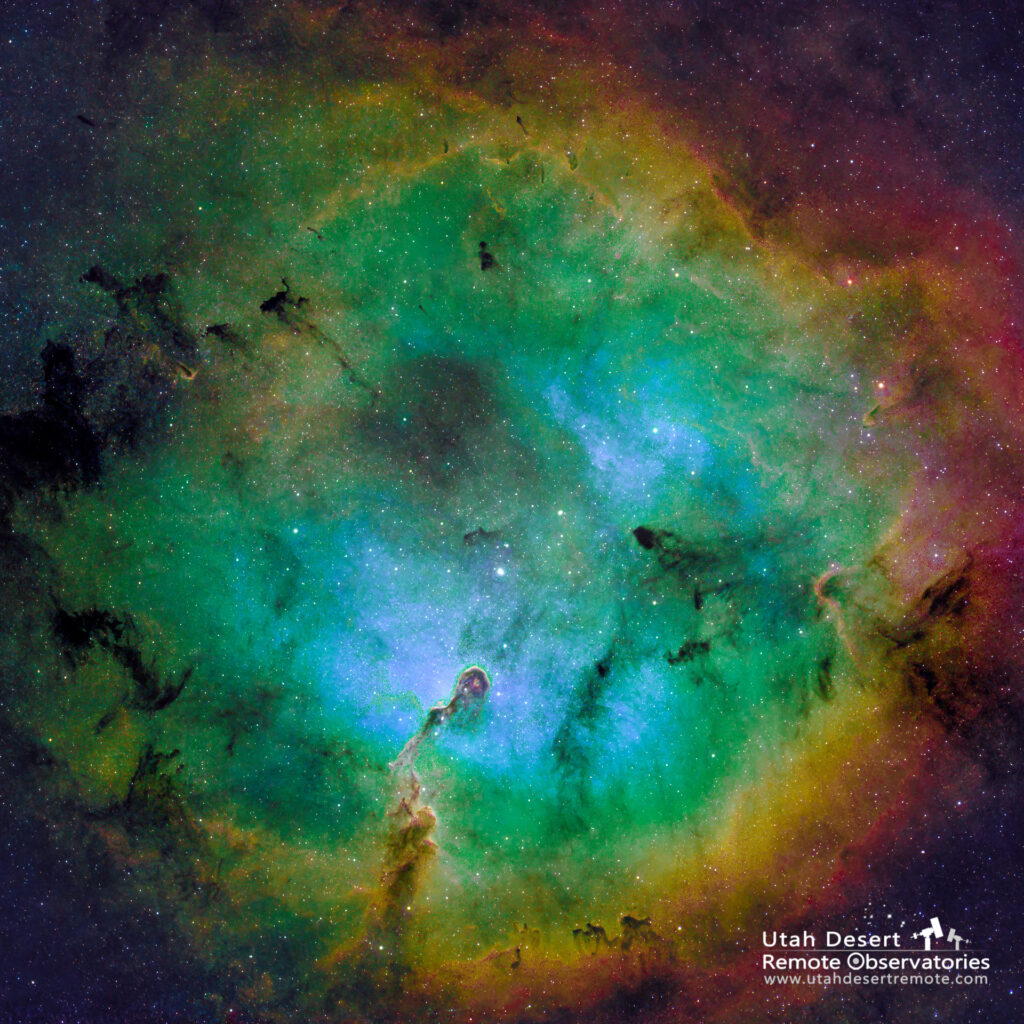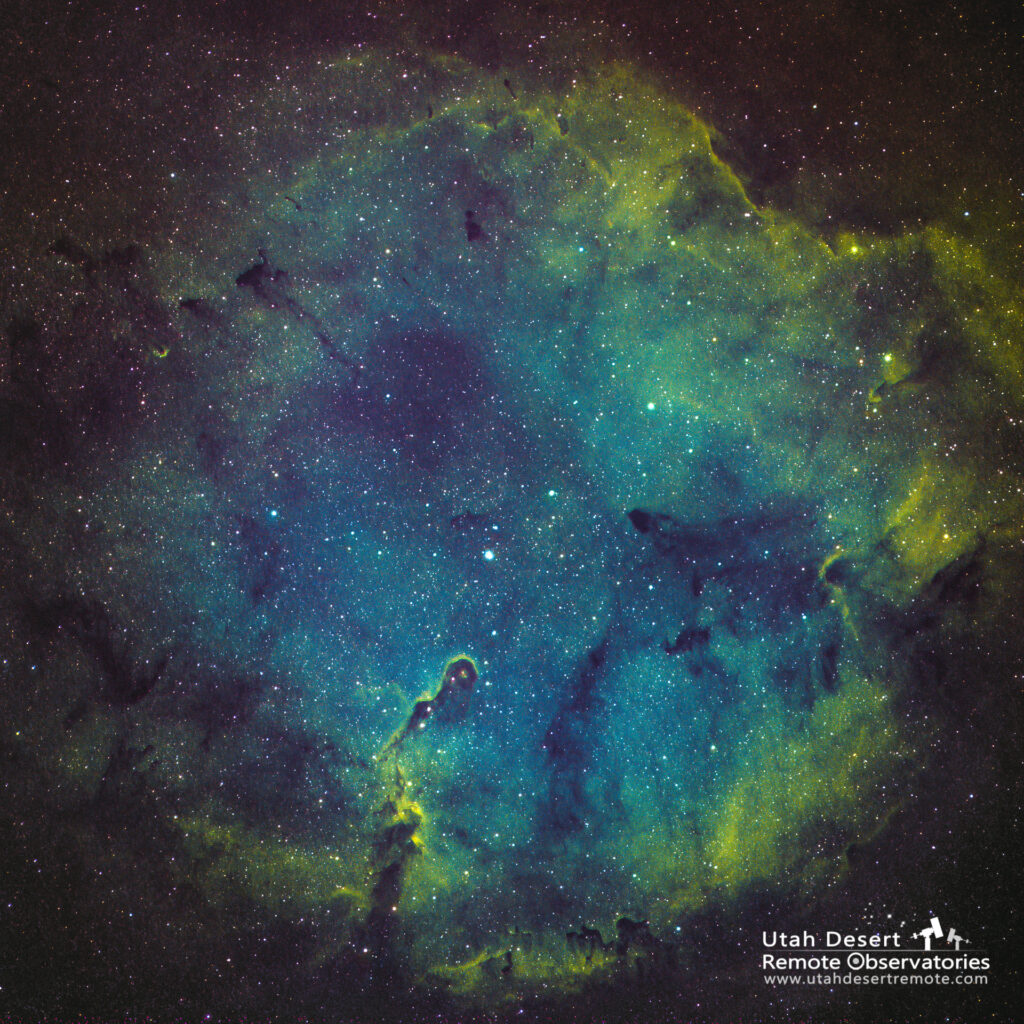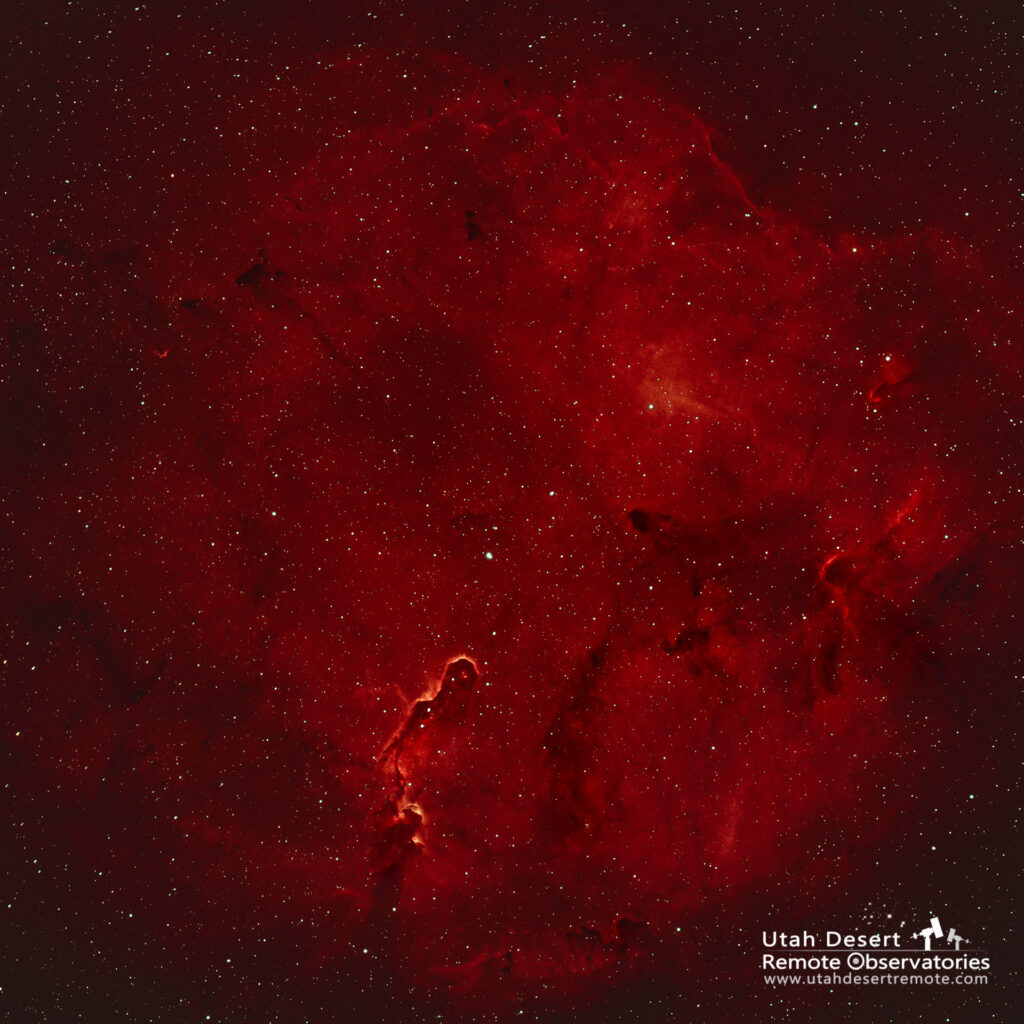
The Elephant Trunk Nebula is a big bright emission nebula that is rich in hydrogen gas but it also has fair amounts of sulfur and oxygen. That makes it a good candidate for the Hubble palette where sulfur is color mapped to red, hydrogen to green and oxygen to blue. The result isn’t a natural color image but it does help to visualize where each of the elements is most prominent. It also can make a very vibrant and colorful fine art astro image.

I’ve imaged the Elephant Trunk several times but I tried a few weeks ago from my Bortle 5+ backyard under a full moon just to see how well narrowband filters would cut through the light pollution and moonlight. The result wasn’t pretty. The hydrogen signal was strong enough to create a clear image but sulfur and oxygen didn’t perform nearly as well. I spent quite a bit of time trying to pull out the three colors but the data just wasn’t there. I resolved to try again from a dark site when the moon wasn’t an issue.
Fortunately I was able to devote an entire night to imaging just the Elephant Trunk using the Takahashi FSQ106 wide-field refractor. I ran the same sequence of exposures and filters that I had used previously where I cycled through three each of hydrogen, oxygen and sulfur for 10 minutes each and then 1 frame each of red, green and blue for 5 minutes each (for the stars).
It’s probably a cliche’ to say the difference was like night and day. The three component gases all had strong signals and the three files were easy to combine and pull out the unique color components. All together I spent less time processing the image and came away with a much better result. Yes, you can do some successful imaging from urban skies using narrowband filters, but it’s just not the same.
There’s a reason institutions spend millions of dollars to locate their telescopes on remote mountain tops. For the rest of us there are facilities like Utah Desert Remote Observatories. Right now you can rent time by the imaging hour on the same Takahashi FSQ106 that I used for these images. Soon we’ll also be adding a PlaneWave CDK 12.5″ for those deep sky objects that need a longer focal length.
And in 2022 we’ll have our new, larger observatory where you can rent a pier to locate you own remote setup. We provide power, internet and roof control. Plus we have caretakers living on the premises so support is always available.
Prologue: I did make one other attempt to salvage something from the first run. Since the hydrogen signal was pretty good as well as the short RGB frames for the stars I was able to create a low-key hydrogen-only version combined with natural color stars.

